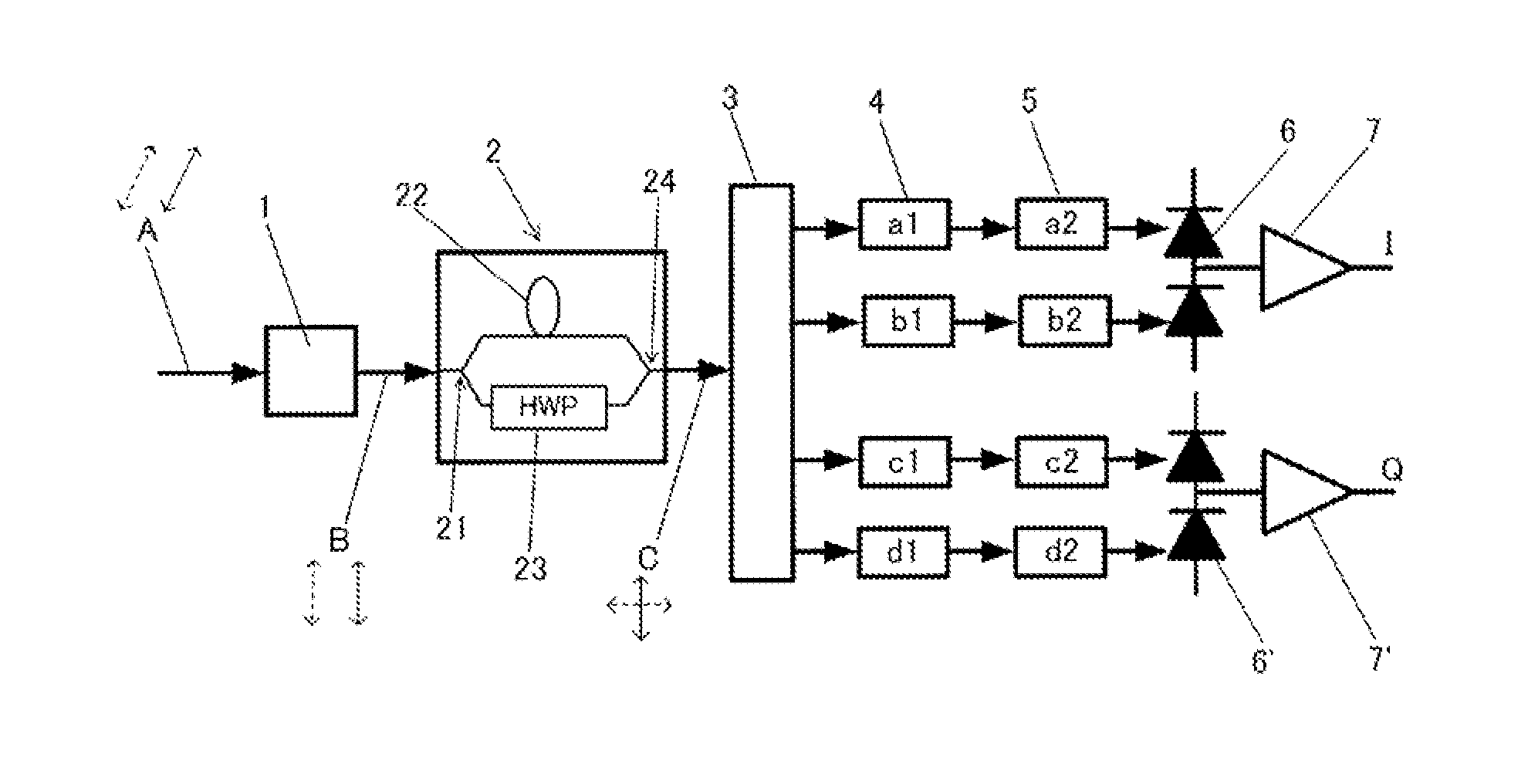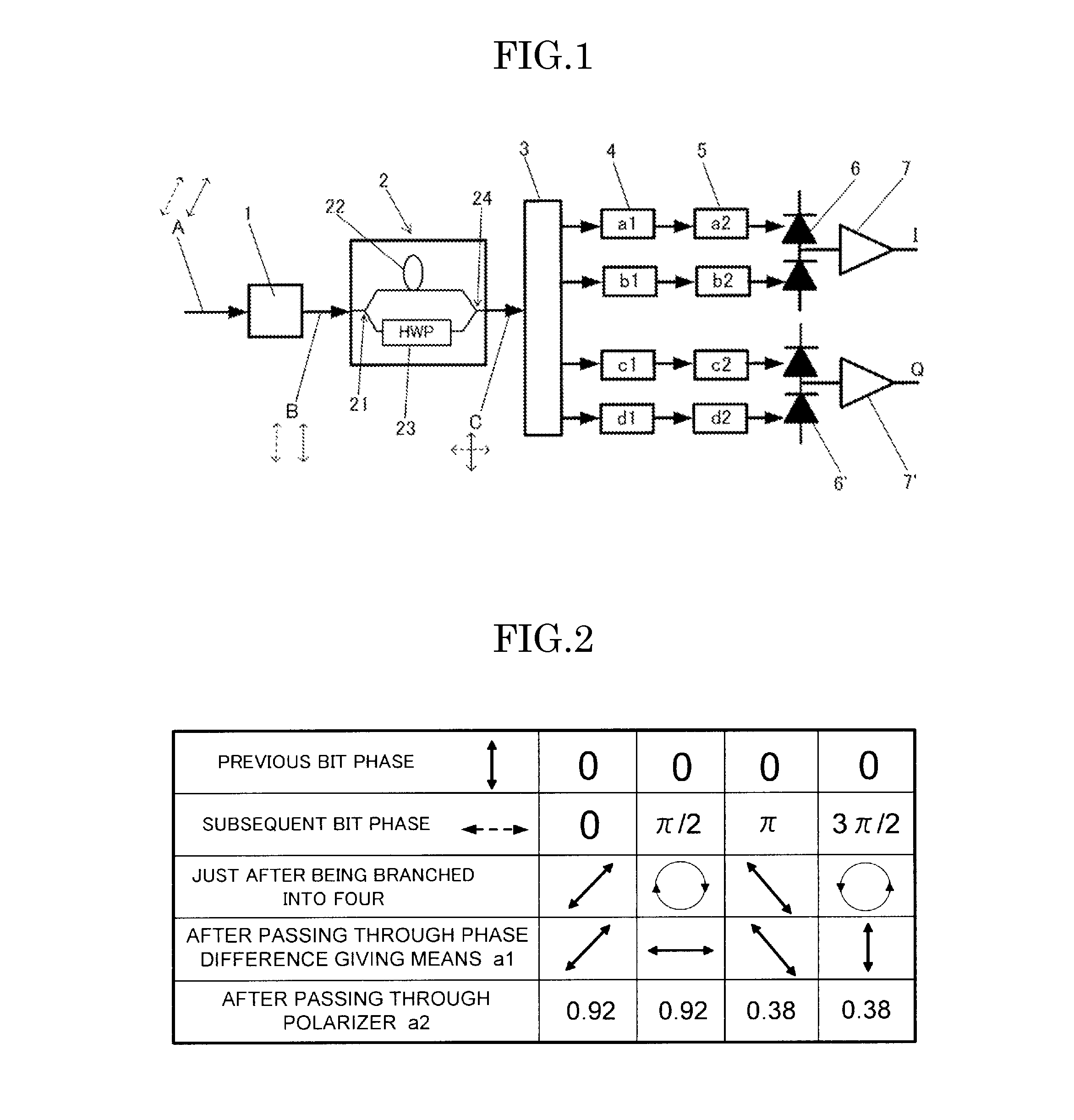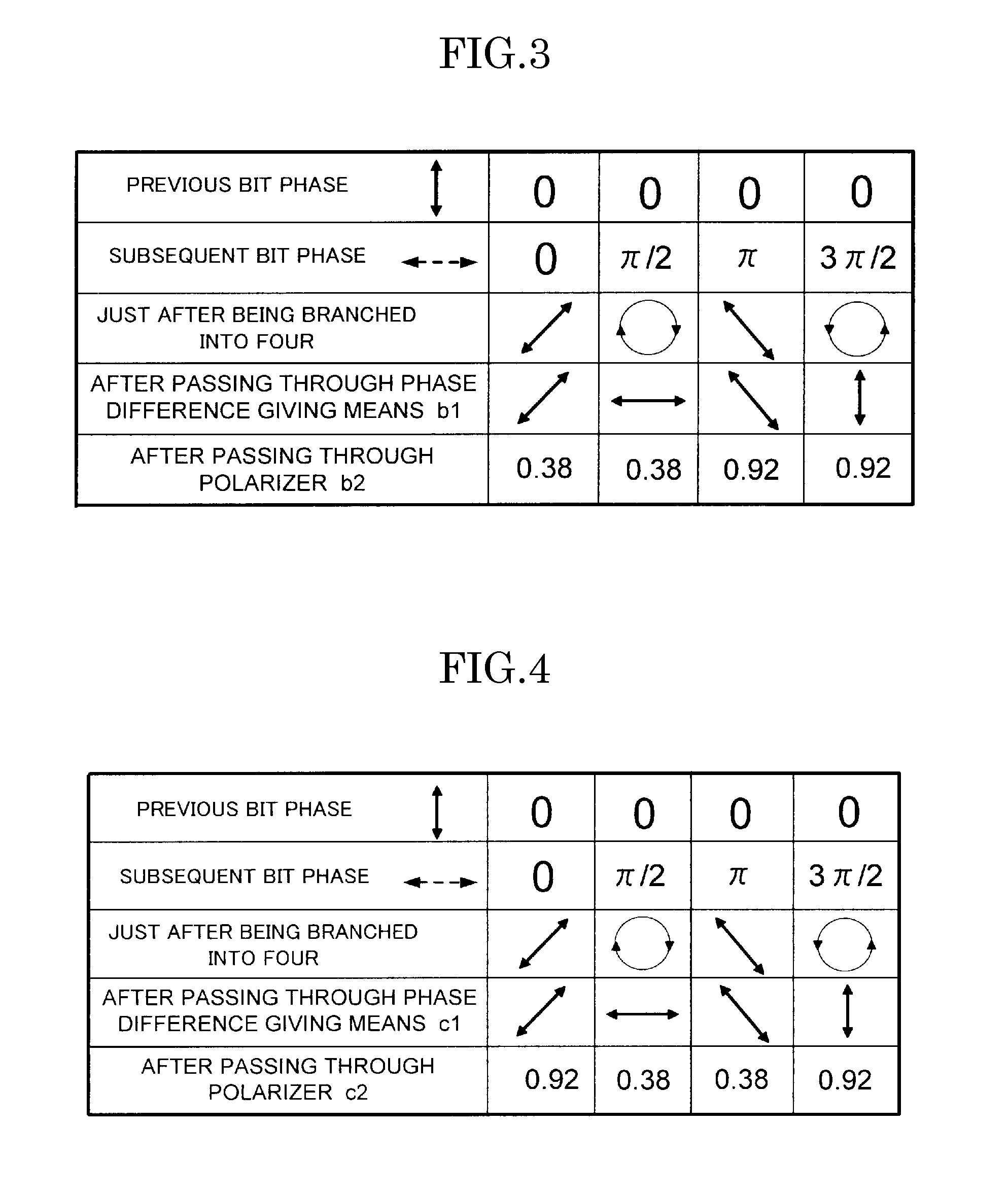[0017]According to the first aspect of the invention, an optical receiver that demodulates an optical signal modulated in a DQPSK manner to a multi-level phase-modulated signal includes interference means for branching the optical signal modulated in a DQPSK manner into two light beams, delaying at least one branched light beam so that two branched light beams have a predetermined
phase difference, rotating the
polarization plane of at least one branched light beam so that the polarization planes of the two branched light beams are orthogonal to each other, and
coupling the two branched light beams, light separation adjusting means for separating the output light beam from the interference means and adjusting the polarization planes of the separated light beams, and detection means for detecting light intensities of the separated light beams output from the light separation adjusting means, and generates an I-component signal and a Q-component
signal on the basis of detection signals from the detection means. Accordingly, it is possible to demodulate an I-component signal and a Q-component signal using only one interference means. Since only one interference means is used, it is necessary to adjust only one
optical path length in the interference means so as to achieve high-precision
demodulation and it is possible to greatly simplify a
control system.
[0018]According to the second aspect of the invention, the light separation adjusting means includes light separation means for separating the output light beam from the interference means into four light beams,
phase difference giving means for giving a phase difference at 45 degrees or 225 degrees to the polarization planes of two separated light beams among four separated light beams from the separation means and giving a phase difference at 135 degrees or 315 degrees to the polarization planes of the other two separated light beams, a
polarizer that has a transmissive
polarization plane of 22.5 degrees or 202.5 degrees for one of the two separated light beams to which the phase difference at 45 degrees or 225 degrees has been given and a transmissive polarization plane of 112.5 degrees or 292.5 degrees for the other thereof, and a
polarizer that has a transmissive polarization plane of 22.5 degrees or 202.5 degrees for one of the two separated light beams to which the phase difference at 135 degrees or 315 degrees has been given and a transmissive polarization plane of 112.5 degrees or 292.5 degrees for the other thereof. Accordingly, it is possible to easily demodulate an I-component signal and a Q-component signal from the output light beam from the single interference means. Since there can be optimal setting such that plural optical
waves in each stage have different polarization planes, it is possible to suppress an
adverse effect that neighboring polarization planes interfere to degrade signals, and the like.
[0019]According to the third aspect of the invention, the light separation adjusting means includes light separation means for separating the output light beam from the interference means into two light beams, phase difference giving means for giving phase differences of different angles to the polarization planes of the separated light beams from the light separation means, and splitting means for splitting the respective separated light beams having different polarization planes into two separated light beams having different components of the polarization plane. Accordingly, it is possible to easily demodulate an I-component signal and a Q-component signal from the output light beam from only one interference means.
[0020]According to the fourth aspect of the invention, the light separation adjusting means includes light separation means for separating the output light beam from the interference means into two light beams, phase difference giving means for giving a phase difference at a same angle to the polarization planes of the separated light beams from the separation means, and splitting means for splitting the respective separated light beams having the same polarization plane into two separated light beams having different components of the polarization plane. Accordingly, it is possible to easily demodulate an I-component signal and a Q-component signal from the output light beam from only one interference means.
[0021]According to the fifth aspect of the invention, the light separation adjusting means includes phase difference giving means for giving a phase difference at a predetermined angle to the polarization plane of the output light beam from the interference means, light separation means for separating the output light beam from the phase difference giving means into two light beams, and splitting means for splitting the respective separated light beams into two separated light beams having different components of the polarization plane. Accordingly, it is possible to easily demodulate an I-component signal and a Q-component signal from the output light beam from only one interference means.
[0022]According to the sixth aspect of the invention, since polarization adjusting means for adjusting an angle of the polarization plane of the optical wave input to the interference means is disposed on an optical path in front of the interference means, it is possible to further accurately adjust the rotation of the polarization planes in the interference means and to further accurately realize the orthogonal relationship between the polarization planes of two branched light beams.
 Login to View More
Login to View More  Login to View More
Login to View More 


